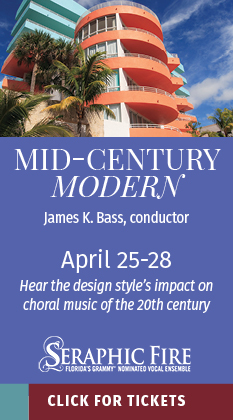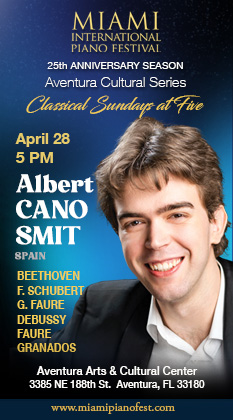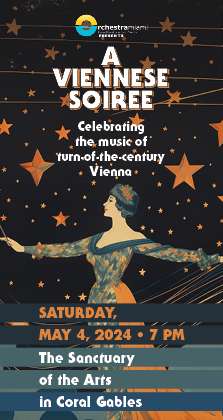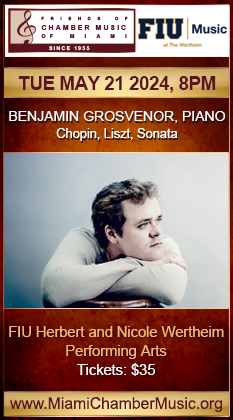Festival Miami closes with Ginastera “magica”
Monday’s grand finale Festival Miami concert was the second of two in honor of Alberto Ginastera. As with most of the concerts, it took place at the University of Miami’s Gusman Concert Hall.
Alberto Ginastera, has been acclaimed as Argentina’s greatest composer, although his student, tango king Astor Piazzolla, seems to have grabbed the popularity sweepstakes. Ginastera (1916-1983) produced a relatively small body of music in a variety of forms, and in a wide variety of styles. Like Stravinsky, his development went through different periods as the compositional methods suited his interest.
Ginastera’s opera Bomarzo reached into dodecaphonic serialism, while other works caress the ears with easily assimilated folk elements. There is also a body of pieces that embrace a more mainstream modernism with jagged rhythms and severe dissonance.
With the skillfully adept pianism of Paul Posnak, two of the composer’s three Pampeanas were played. No. 1 for violin, and No. 2 for cello, feature folk-like melodies and rhythms that tickle the ears with piquant delight. They are said to reflect the Argentinean Pampas and gaucho-rhythms of the region, and each begins with a slow, mostly unaccompanied, introduction before the fireworks begin. They resemble Ravel’s Tzigane in form, if not in style.
Violinist Glenn Basham and cellist Ross Harbaugh are members of the Bergonzi String Quartet and serve on the faculty of the Frost School of Music. Their performances were appropriately virtuosic, and displayed the attitude needed to make the music work.
Three a capella choruses comprise Lamentaciones de Jeremias Profeta (Lamentations of Jeremiah). They were written in 1946, during the composer’s self-imposed exile to the United States as an escapee from the Peronist government. The music has elements of Renaissance polyphony as well as some moving, and effective astringency. Under the skilled leadership of faculty member Joshua Habermann, the Frost Chorale began, continued, and ended together. They also sang in tune and created some lush sonorities along the way. None of this can have been easy, given the harmonic and contrapuntal nature of the music.
The Cantata para America Magica for soprano and percussion ensemble was a feast for the eyes as well as the ears. The stage was flooded with a sea of mostly standard percussion instruments, including two pianos and celesta. In six movements, the cantata begins with a Mayan version of Genesis and concludes with a view of the Apocalypse. In essence from nothing to nothing, with much primitivistic, ritualistic, and arresting writing between. As a moving prelude, the composer’s daughter Georgina Ginastera was present to introduce the work.
This is by no means easy music to listen to. It employs serialism and quarter-tones along with a controlled barbarism with ear-splitting climaxes. Soprano Virginia Correa Dupuy, a native Argentinean, sang, spoke, scooped, intoned, and glided her way through the difficult writing with many moving moments. There was never any hesitation in attacking the wild intervals required of her, or of projecting her guttural inflections and vocal gymnastics above the general din. It was a spectacular show, and the Frost Percussion Ensemble provided an orgy of color with which to digest the frequently indigestible. Conductor Thomas Sleeper held everything in check without placing too much restraint on his players. The Frost Percussion Ensemble played with great enthusiasm, enjoyment, and most importantly, skill.
Alan Becker has reviewed concerts for the South Florida Sun-Sentinel and Miami Herald. He has also written feature articles and CD reviews for the American Record Guide, and holds degrees from the Manhattan School of Music and Syracuse University, with additional graduate studies at the University of Miami.
Posted in Performances
Leave a Comment
Tue Nov 4, 2008
at 1:23 pm
No Comments






